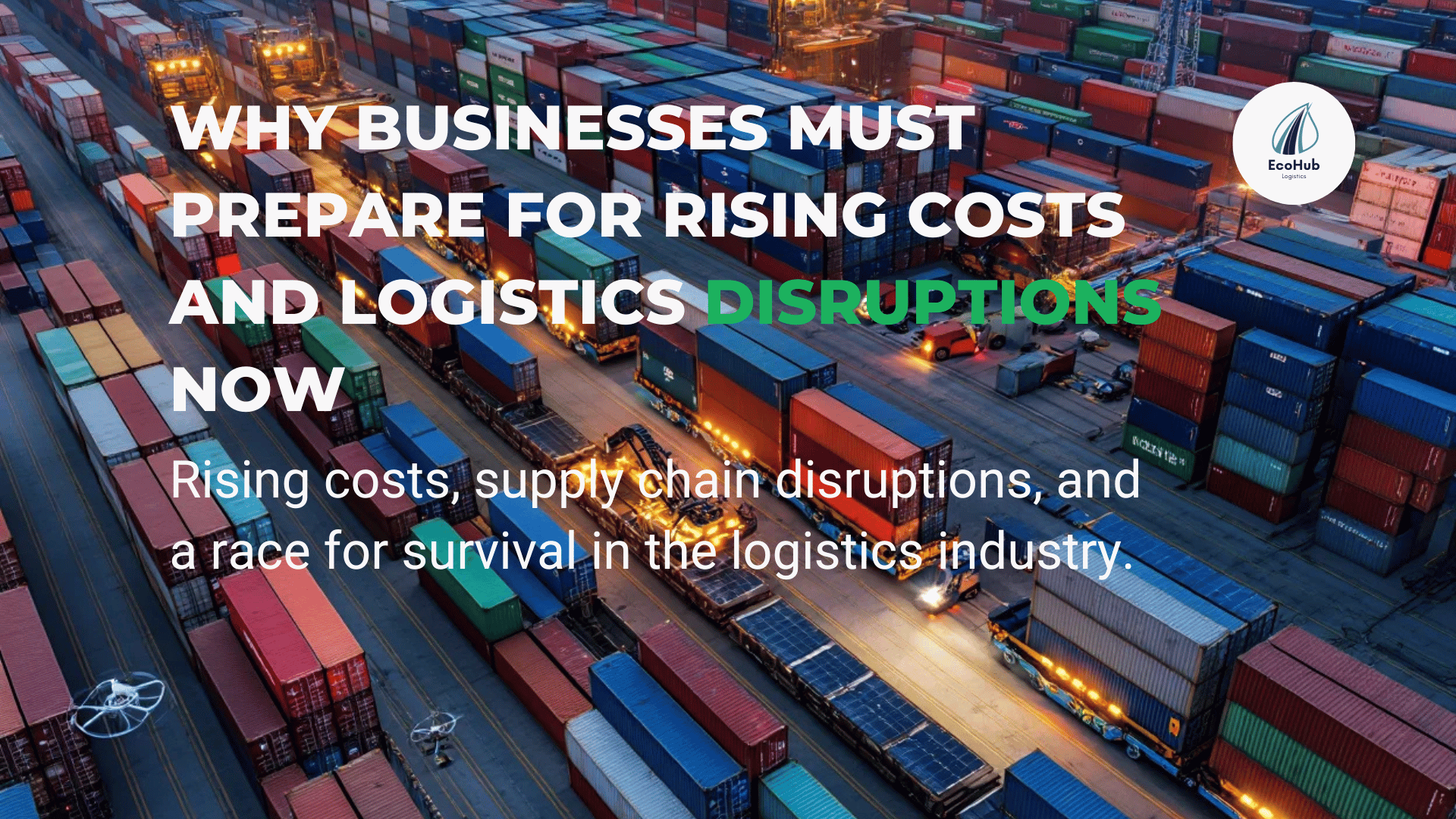How Trump’s New Tariffs Will Reshape the U.S. Transportation Market in 2025
The U.S. transportation sector stands at the precipice of a major restructuring.
EXECUTIVE SUMMARY
With Donald Trump’s return to the White House and his aggressive trade stance, the U.S. transportation and logistics sector faces what industry analysts are calling a “perfect storm” of disruptions. Planned tariffs on imports from China, Mexico, and Europe threaten to fundamentally alter supply chains and business models across the industry. This Forbes analysis examines the strategic imperatives for industry players navigating this volatile landscape.
TRADE WAR 2.0: TRUMP’S TARIFF VISION
Donald Trump’s administration is moving forward with plans to impose substantial new tariffs on imports from key trading partners. For the transportation industry, this represents perhaps the most significant policy shift in decades.
“We’re looking at a complete reconfiguration of global trade flows,” says Dr. Elaine Chen, Chief Economist at Global Supply Chain Institute. “The last trade war was just a preview of what’s coming.”
Industry analysts forecast three critical consequences that will reshape the sector:
1. Escalating Shipping Costs
Supply chain disruptions will create container shortages across major routes while simultaneously driving up fuel costs. The American Transportation Research Institute projects a 15-22% increase in per-mile operating costs for carriers.
2. Worsening Labor Challenges
The driver shortage—already at crisis levels with an estimated 80,000 unfilled positions—will intensify as demand patterns shift abruptly. Meanwhile, delivery delays will become commonplace as carriers struggle to adjust routes and capacities.
3. Market Consolidation
Smaller transportation companies may face existential threats. “We’re projecting that up to 30% of small to mid-sized carriers could exit the market within 18 months of full tariff implementation,” warns Michael Hernandez of Transport Capital Partners.
THE TARIFF IMPACT: SECTOR-BY-SECTOR ANALYSIS
TRUCK CARRIERS FACE COST EXPLOSION
The trucking industry stands to face some of the most immediate impacts. With approximately 37% of heavy-duty truck components sourced from international suppliers, rising parts costs will directly hit bottom lines.
“Fleet maintenance costs could increase by 18-25% year-over-year,” projects Sandra Williams, Fleet Analytics Director at TruckTech Solutions. “For an industry already operating on razor-thin margins, this represents an existential challenge.”
Companies with aging fleets face particularly difficult decisions as new equipment prices—already up 28% since 2021—are projected to rise another 15-20% under new tariff scenarios.
RAILROAD COMPANIES REQUIRE STRATEGIC PIVOTS
Major railroads have spent billions optimizing networks for existing trade patterns. As imports shift away from China toward Latin America and other regions, railroads face costly infrastructure realignments.
Union Pacific CEO Thomas Reynolds recently acknowledged this challenge in an earnings call: “We’re accelerating investments in our south-north corridors while reevaluating capacity allocations on traditional east-west routes. This represents a multi-billion dollar strategic pivot.”
PORTS AND MARITIME SHIPPING BRACE FOR VOLATILITY
U.S. ports, particularly those heavily dependent on Chinese trade, face significant volume disruptions. The Port of Los Angeles, which handles approximately 20% of all incoming cargo to the United States, could see volume declines of 15-30% according to preliminary estimates.
Meanwhile, shipping companies must reconfigure vessel deployments and routes. “We’re looking at the most significant network redesign since the pandemic,” notes maritime consultant Eleanor Jenkins. “Companies that can rapidly redeploy assets to emerging trade lanes will capture market share.”
DISTRIBUTION AND RETAIL: MARGIN COMPRESSION
For distributors and retailers, higher transportation costs threaten already-compressed margins. Industry leaders are exploring multiple strategies:
- Nearshoring production to reduce transportation costs
- Implementing advanced inventory optimization to reduce carrying costs
- Passing costs to consumers through strategic price increases
- Renegotiating supplier contracts to share tariff impacts
VEHICLE TRANSPORT BROKERS: 6-MONTH OUTLOOK
For specialized vehicle transport brokers, the next six months represent a critical strategic window. Our analysis indicates several key developments:
1. PRICING POWER DYNAMICS SHIFT
Brokers will face intense margin pressure as carriers demand higher rates to offset rising operational costs. Those without strong carrier relationships or differentiated services will struggle to maintain profitability. Market leaders are already implementing sophisticated pricing algorithms that can adjust in real-time to changing market conditions.
“The days of static pricing are over,” notes Jonathan Peters, CEO of AutoTransport Solutions. “We’re seeing our most sophisticated clients implement dynamic pricing models that can adjust hourly based on capacity, fuel costs, and route profitability.”
2. REGIONAL MARKET FRAGMENTATION INTENSIFIES
As national carriers adjust networks to accommodate new trade patterns, capacity will shift dramatically between regions. The Southeast and Southwest are projected to see carrier shortages as Mexico-US trade volumes increase, while traditional port hubs may experience temporary overcapacity.
“We’re forecasting a 22% capacity deficit in Texas-to-California lanes by Q3,” says Maria Gonzalez of Transport Market Intelligence. “Meanwhile, traditional Northeast corridors could see temporary oversupply as import volumes shift.”
3. TECHNOLOGY INVESTMENT BECOMES NON-NEGOTIABLE
Brokers without advanced technology platforms will find themselves at severe competitive disadvantages. Market leaders are implementing:
- AI-powered load matching algorithms
- Predictive analytics for capacity forecasting
- Real-time tracking and exception management
- Automated carrier settlement systems
- Dynamic route optimization
“We’re seeing a clear divergence in performance between tech-enabled brokers and traditional operations,” notes venture capitalist Sarah Chen, whose firm has invested over $200 million in transportation technology. “The technology gap is creating a two-tier market where legacy players simply cannot compete on efficiency or customer experience.”
4. INSURANCE AND COMPLIANCE COSTS ESCALATE
As operational risks increase, insurance providers are already adjusting premiums upward. Early industry data suggests broker insurance costs could rise 15-25% year-over-year, with additional increases for high-risk routes or cargo.
Regulatory compliance costs are similarly projected to increase as agencies implement stricter oversight on carriers facing financial pressure. Brokers will need sophisticated compliance systems to verify carrier qualifications and avoid liability exposure.
5. WORKING CAPITAL REQUIREMENTS EXPAND
Extended payment terms and cashflow management will become crucial competitive factors. Brokers with strong balance sheets can offer quicker payment to carriers struggling with cashflow, potentially securing preferential capacity access.
“We’re seeing leading brokers use financial strength as a competitive weapon,” explains finance consultant Raymond Torres. “The ability to pay carriers in 15 days versus the industry-standard 30-45 days is creating meaningful capacity advantages.”
6. CONSOLIDATION ACCELERATES
Private equity firms are actively pursuing roll-up strategies in the transportation brokerage space, acquiring smaller players struggling with rising technology and compliance costs. Market analysts project that 20-30% of smaller brokers could be acquired or exit the market within the next 18 months.
“The fragmented broker market is ripe for consolidation,” states Marcus Williams of Capital Transport Partners. “We’re actively pursuing acquisitions of brokers in the $20-100 million revenue range who lack scale or technology capabilities.”
STRATEGIC IMPERATIVES: ACTION PLAN FOR INDUSTRY LEADERS
Forward-thinking transportation companies are already implementing comprehensive strategies to navigate the challenging landscape:
1. DIVERSIFY SUPPLY NETWORKS
Leading companies are rapidly reducing dependence on tariff-affected regions. This includes:
- Developing alternative sourcing in non-targeted countries
- Building redundant supplier networks to mitigate disruption risks
- Implementing vendor monitoring technology to track supplier financial health
2. EMBRACE LOGISTICS OPTIMIZATION
Companies that can optimize operations will gain sustainable cost advantages:
- Shifting to local production networks where economically viable
- Implementing strategic warehouse positioning to reduce transit times
- Adopting multi-mode transportation strategies to balance cost and speed
- Deploying dynamic routing systems that adjust to changing conditions
3. ACCELERATE TECHNOLOGICAL TRANSFORMATION
Digital capabilities have moved from competitive advantage to survival requirement:
- Implementing end-to-end visibility solutions
- Adopting predictive analytics for demand forecasting
- Deploying autonomous technologies where viable
- Investing in API-based integration with partners and customers
LOOKING AHEAD: OPPORTUNITY AMID DISRUPTION
While the challenges facing the transportation industry are substantial, periods of disruption historically create opportunities for innovation and market leadership shifts.
“The coming 24 months will completely reshape the competitive landscape,” predicts logistics consultant David Zhang. “We’ll see market leaders who are too slow to adapt lose significant share, while nimble, technology-enabled players dramatically expand their presence.”
For executives navigating this volatile environment, five key questions should guide strategic planning:
- How exposed is your business to tariff-affected trade lanes?
- What technology investments are needed to maintain competitiveness?
- How will changing cost structures affect customer relationships and pricing?
- What consolidation opportunities exist in your market segment?
- How can operational flexibility be increased to handle unexpected disruptions?
Companies that proactively address these questions will position themselves not just to survive the coming disruptions but to capitalize on them.

